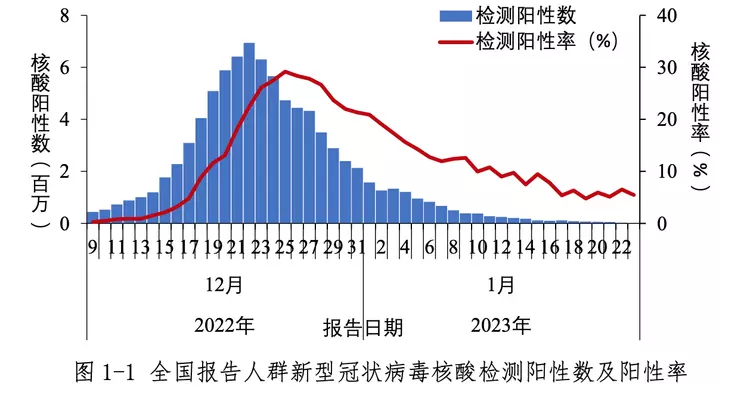
CDC Weekly Report: The epidemic did not rebound significantly during the Spring Festival, and the current round of the epidemic in China is nearing its end
“During the Spring Festival holiday, the epidemic did not rebound significantly, and no new mutant strains were found throughout the epidemic, and the current round of the epidemic in China is nearing its end.” So concludes the “Overview of National Novel Coronavirus Infection Diagnosis and Surveillance Data” (hereinafter referred to as the “Overview”) published in the latest issue of China CDC Weekly (the “CDC Weekly”).
The Overview was published by the CDC on Jan. 25. The Overview provides a preliminary analysis of national diagnosis and surveillance data for novel coronavirus infections from December 9, 2022 to January 23, 2023, using surveillance data reported by provinces.
The Overview shows that the current round of the epidemic in China peaked in late December 2022 and declined thereafter, with a similar trend across provinces and a largely synchronized trend in urban and rural areas, and a decreasing trend in the number of outpatient (emergency) visits, hospital readmissions, and hospital deaths, with the overall national epidemic reduced to a lower level by late January 2023, further slowing the pressure on medical treatment.
Specifically, the positive nucleic acid test rate in China peaked on December 25, 2022 (29.2%), and the positive antigen test rate peaked on December 22 (21.3%), and both dropped to below 6% in late January 2023. Meanwhile, the number of fever outpatient visits nationwide also peaks in late December 2022, with Beijing, Tianjin, and Hebei provinces peaking slightly earlier in terms of cities alone; by late January 2023, the number of fever outpatient visits in both urban and rural areas declines by more than 90% from the peak.
The number of in-hospital patients peaked slightly later than the number of infections nationwide, peaking at 1.625 million on January 5; the number of positive serious illnesses also peaked at 128,000 on that day, before falling back to 36,000 on January 23. The number of in-hospital deaths peaked daily at 4,273 on Jan. 4 and fell back to 896 on Jan. 23.
Infections peaked nationwide in late December last year, with peak times varying by province and largely synchronized between urban and rural areas
The Overview reports national infection surveillance data, both for nucleic acid testing and antigen testing, as well as sentinel community-based population-based infection surveillance. In particular, the nucleic acid test positivity rate peaked on December 25, 2022 (29.2%) and the antigen test positivity rate peaked on December 22 (21.3%) and both dropped to less than 6% in late January 2023.
After December 8, 2022, the whole country (excluding Hong Kong, Macao and Taiwan, the same below) will no longer carry out full-scale nucleic acid screening, and will implement as much testing as possible, while some regions will carry out regular nucleic acid testing for key populations. As a result of the willingness of residents to be tested, the amount of nucleic acid testing in each province continues to decrease, for example, the amount of testing reaches 150 million on December 9, drops to 7.54 million on January 1, 2023, and drops to a minimum of 280,000 on the 23rd.
After December 9, 2022, the number of positive nucleic acid tests and positive rate of the reported population in each province showed a trend of first increasing and then decreasing, with the number of positive tests reaching a peak on December 22 (6.94 million) and then gradually decreasing to a minimum of 15,000 on January 23, 2023; the positive test rate reached a peak on December 25, 2022 (29.2%) and then gradually decreased to to 5.5%.
The peak rate of positive nucleic acid tests varies by province, with Beijing and Tianjin peaking on December 14 and 19, 2022, respectively; Sichuan, Chongqing, Hubei and other 15 provinces peaking between December 21-24; and Hunan, Zhejiang, Guangxi and other 15 provinces peaking between December 26-28. Provinces reached the peak after the rate of decline varies, have now fallen to a lower level, more than 70% of provinces down to less than 10%.

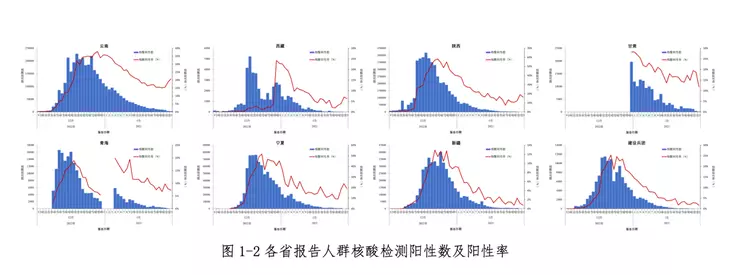
In terms of antigen testing. since December 2022, some provinces have established resident antigen testing information collection applications (APPs), where residents can voluntarily upload antigen testing results. The number of reported antigen tests in the provinces is low and decreasing, from a high of 1.89 million on December 19, 2022 to a low of 105,000 on January 23, 2023.
The number of positive antigen tests and the positivity rate in reporting provinces increased rapidly after December 9, 2022, peaked on December 22 (337,000 and 21.3%) and then fluctuated and decreased to the lowest on January 23, 2023, at 4,773 and 4.5%, respectively.
Recently, the positive rate of nucleic acid and antigen testing has slightly increased in a few provinces, which may be related to the higher willingness to test among symptomatic people and people at risk of exposure and the decreasing amount of testing among community people, as well as the increased mobility of people during the Chinese New Year holidays, which may also cause an increased risk of infection among some uninfected people.
Since December 16, 2022, community population sentinel sites were established in each province to carry out infection surveillance. A multi-stage stratified cluster sampling method was used to select provincial capitals, one large city and one county in each province, with at least 2000 households (no less than 5000 people) in each provincial capital, 1500 households (no less than 3000 people) in each large city, and 1000 households (no less than 2500 people) in each county. The minimum sampling unit is the household, and all family members of all selected households are used as surveillance subjects, totaling about 420,000 people, mainly to understand the nucleic acid and antigen testing.
From December 16, 2022 to January 12, 2023, the population in the sentinel community will be surveyed twice a week (8 rounds in total), and from January 13, once a week. The average daily rate of new positives (defined as the average daily rate of new positive nucleic acid and antigen tests during this survey round) decreased from 4.13% in the first round (December 16-19, 2022) to 0.13% in the ninth round (January 13-20, 2023), with a maximum of 6.30% in the second round (December 20-22, 2022). The average daily new positive rate in urban areas decreased from a maximum of 6.89% in Round 2 to 0.13% in Round 9. The average daily rate of new positives in rural areas decreased from a maximum of 4.79% in Round 2 to 0.12% in Round 9. The results show that the current level of infection in the community population of the national epidemic has dropped to a lower level, and the trend of the epidemic in urban and rural areas is basically synchronized.
National fever outpatient visits peaked in late December last year and fell sharply in the second half of the following month
The Overview shows that the number of visits to fever clinics (clinics) in rural areas, township health centers, and fever clinics (clinics) in medical institutions above the second level and urban community health service centers nationwide peaked in late December 2022 and then declined sharply in late January 2023, down more than 90% from the peak.
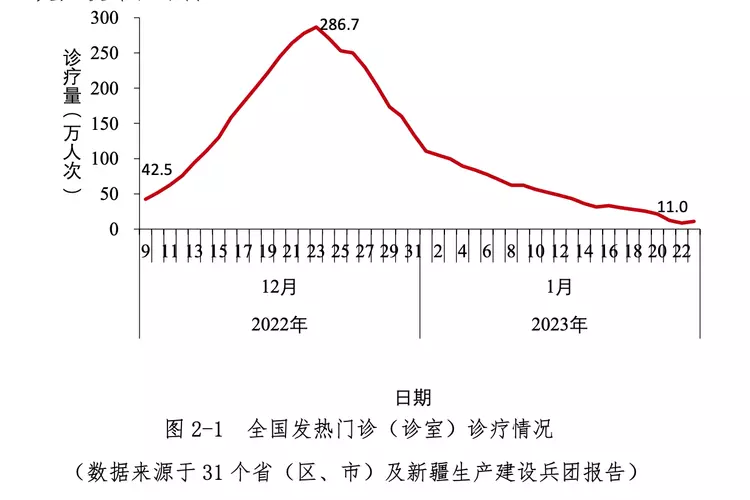
The number of visits to fever clinics (clinics) nationwide peaked at 2.867 million on December 23, 2022, and then declined continuously, falling back to 11.0 million on January 23, 2023, down 96.2% from the peak.
The number of visits to fever outpatient clinics (clinics) in rural areas nationwide peaked at 922,000 on December 23, 2022, and then fluctuated downward, falling back to 50,000 on January 23, 2023, down 94.6% from the peak.
The number of visits to fever outpatient clinics (clinics) in medical institutions above the second level and urban community health service centers nationwide peaked at 1,954,000 on December 22, 2022, and declined continuously thereafter, falling back to 59,000 on January 23, 2023, down 97.0% from the peak. The trend in urban fever outpatient visits is generally similar across provinces, with all provinces peaking in late December 2022, except Beijing, Tianjin, and Hebei, which reach their peak slightly earlier.
The Overview also provides weekly influenza-like case detection data from sentinel hospitals, with influenza-like cases peaking at 12.1% during the week of December 19-25, 2022, and then falling back to 2.0% during the week of January 16-January 22, 2023.
Surveillance for new coronavirus infections was conducted at the established influenza surveillance network sentinel hospitals (824 sentinel hospitals in total, including 546 national sentinel hospitals and 278 non-national sentinel hospitals) and national network laboratories (402) in China from December 12, 2022.

From September to early December 2022, the number of weekly influenza-like cases (ILI, Influenza-like Illness, temperature ≥38°C with one of cough or sore throat) in sentinel hospitals remained stable at around 100,000, and the ratio of influenza-like cases to outpatient (emergency) visits (ILI%) fluctuated in the range of 2.7% to 3.6%.ILI increased rapidly in week 50 and week 51 (December 19-25) ILI reached a maximum of 600,000.
ILI% rose rapidly from week 50 (8.5%), reached a maximum of 12.1% in week 51, and declined rapidly from week 52, and has fallen back to 2.0% by week 3 of 2023 (January 16-January 22) (Figure 2-5).
Looking at different zones, ILI% reached its peak close to each zone, with Southwest and Central China peaking in week 50 of 2022 (11.8%,9.2%, respectively); Northwest, South China, East China, North China and Northeast China peaked in week 51 (11.3%, 15.3%, 13.7%, 5.6%, 11.2%, respectively), and then continued to decline (Figure 2 -6). ILI% has now fallen back to pre-pandemic levels or even lower in all regions.

Network laboratories tested influenza-like case specimens for both neocoronavirus and influenza virus, and from week 49 (December 9) of 2022, the rate of neocoronavirus positivity began to gradually increase, with the nation as a whole reaching a peak during weeks 51 and 52 and then beginning to fluctuate and decline; the rate of influenza virus positivity gradually decreased over the same period, falling to very low levels by late December (Figure 2-7). From the perspective of different regions, the positive rate of new coronaviruses in influenza-like case specimens peaked close to the same time in each region, with peaks in Central China, Southwest China, Northwest China, North China and Northeast China at week 51 (73.2%, 72.5%, 58.3%, 44.4% and 38.4%, respectively); peaks in East China and South China at week 52 (73.0% and 68.4%, respectively), followed by a declined (Figure 2-8).
The number of patients in hospital nationwide peaked on January 5 and dropped significantly later in the month
The Overview shows that the number of newly crowned patients in the hospital nationwide peaked on January 5, 2023, at 1,625,000; of these, 128,000 were positive and seriously ill on that date, before falling back to 36,000 on January 23. The number of in-hospital deaths peaked daily at 4,273 on Jan. 4 and fell back to 896 on Jan. 23.
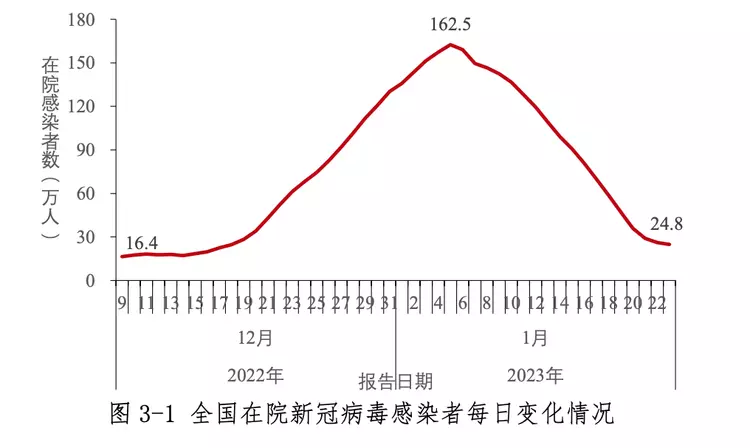
The national number of new in-hospital coronary infections peaked at 1,625,000 on January 5, 2023, and then continued to decline, falling back to 248,000 on January 23, an 84.8% decrease from the peak number.
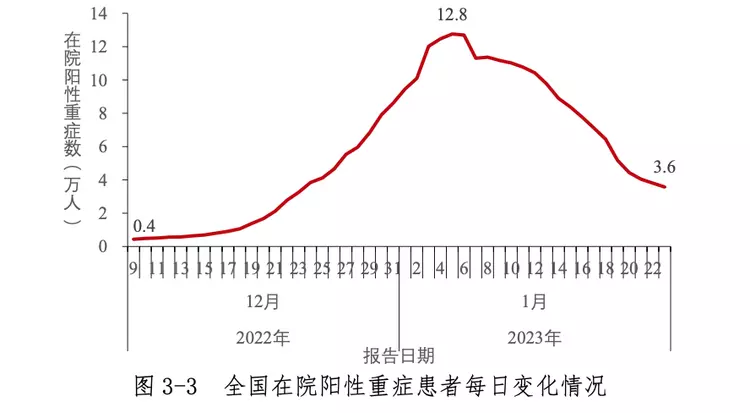
The national number of positive, seriously ill patients in hospital increased by nearly 10,000 per day between December 27, 2022 and January 3, 2023, with a significant decrease in the increase on January 4, peaking at 128,000 on January 5, and then continuing to decline, falling back to 36,000 on January 23, a 72.0% decrease from the peak number.
At present, the number of newly crowned infected persons and positive serious illnesses in hospital in all provinces are still in the process of continuous decline. The number of positive serious illnesses in hospital has dropped to below 2,000 cases in all 28 provinces, except for 4 provinces, namely Guangdong, Shandong, Guangxi and Fujian, which slightly exceeded 2,000 cases.
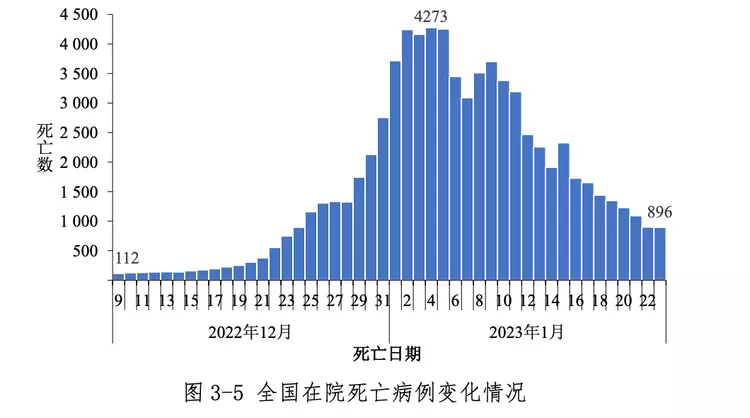
The number of in-hospital deaths reached a daily peak of 4273 on January 4, 2023, and then continued to decline, falling back to 896 on January 23, a 79.0% decrease from the peak.
The circulating strains in this round were BF.7 and BA.5.2, with no new variants identified
The Overview shows that China continues to conduct surveillance of new coronavirus variants, and in terms of virus variant surveillance, after December 12, 2022, each province selected another hospital in each of three different regions as a sentinel hospital for virus variant surveillance, collecting specimens from outpatient and inpatient cases for nucleic acid testing and sequence determination. At the same time, virus variant surveillance of incoming persons was conducted at land, water and air ports nationwide. The surveillance results showed that the prevalent strains in this round of the outbreak were BF.7 and BA.5.2, and no new mutant strains were found.
Surveillance showed that BF.7.14 accounted for 96.7% of BF.7; BA.5.2.48 accounted for 60% of BA.5.2 among our local cases. The Overview summarizes the prevalence of BF.7.14 and BA.5.2.48 variant strains.
From September 26, 2022 to January 23, 2023, a total of 18,906 valid sequences of the neo-coronavirus genome of indigenous cases were reported nationwide, all of which were Omicron variant strains, with a total of 69 evolutionary branches, the main prevalent strains being BA.5.2 (70.8%) and BF.7 (23.4%), 13 evolutionary branches such as BA.2.76 with composition ratios ranging from 0.1% to 1.3% between 0.1% and 1.3%, and 54 evolutionary branches with composition ratios less than 0.1% (1.1% in total).
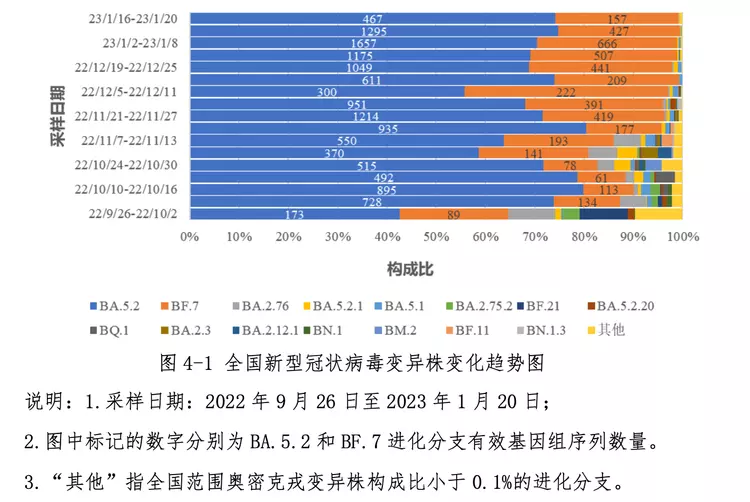
From December 1, 2022 to January 23, 2023, a total of 10,165 local cases of new coronavirus genome valid sequences were reported nationwide, all of which were Omicron mutant strains with a total of 2 evolutionary branches. The main prevalent strains BA.5.2 (70.2%) and BF.7 (28.3%). A total of 11 cases of variant of interest were identified, including 1 case of XBB.1, 1 case of BQ.1.1.17, 4 cases of BQ.1.1, 3 cases of BQ.1.2 and 2 cases of BQ.1.8.
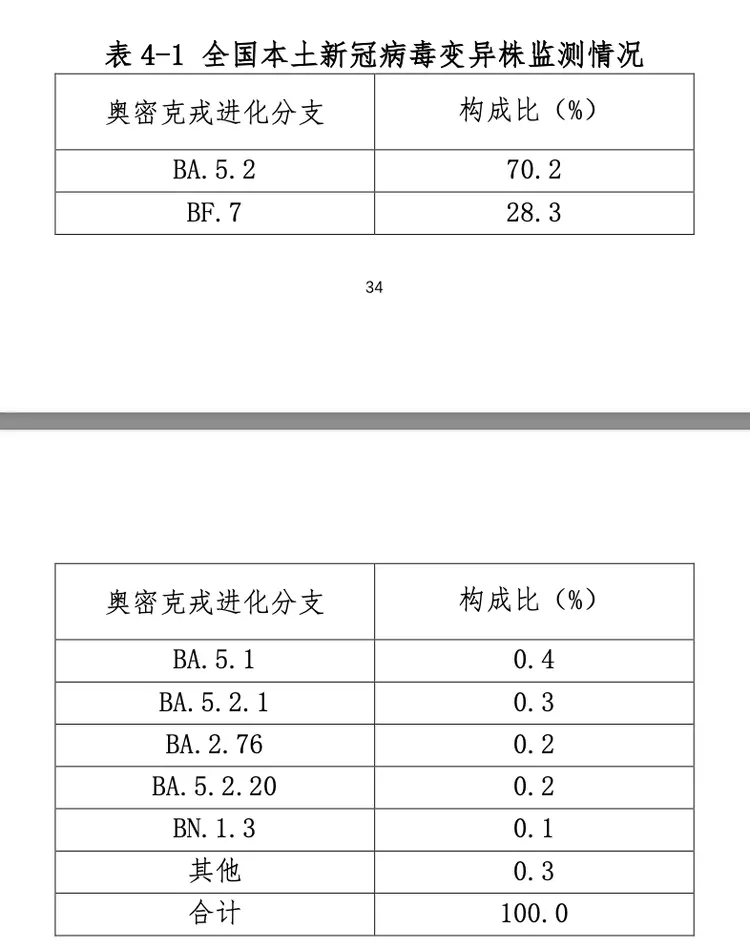
In terms of the situation in each province, in general, Beijing and Tianjin had BF.7 as the dominant strain; Jiangsu and Inner Mongolia had basically the same BF.7 and BA.5.2; all other provinces had BA.5.2 as the dominant strain.
The Overview also summarizes the prevalence of BF.7.14 and BA.5.2.48 variants.
According to the latest data from Pango nomenclature, BF.7 contains four characteristic amino acid mutation sites: ORF7a:H47Y, ORF1b:L238F, S:C1243F, ORF1a:V274L and a characteristic nucleotide mutation site C29632T named BF.7.14. Sequencing results show that among the imported cases, BF.7.14 accounts for 37.4% of BF.7, mainly concentrated in December 2022, with the earliest reported date of September 25, 2022. Among the local cases, BF.7.14 accounted for 96.7% of BF.7, with the earliest reported date of September 27, 2022.
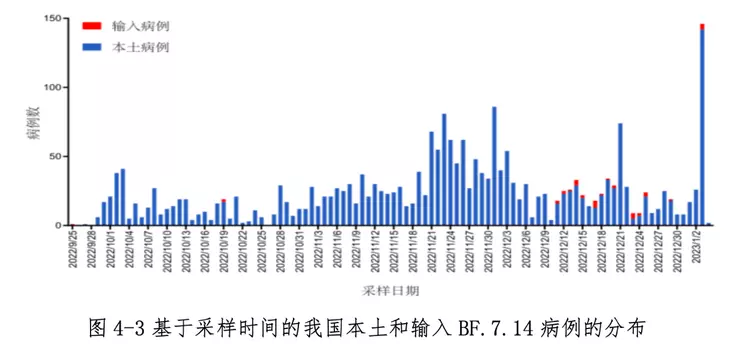
According to the latest data of Pango nomenclature, the variant of BA.5.2 containing four characteristic nucleotide mutation sites: C2710T, C8626T, C16887T and T17208C was named BA.5.2.48. Sequencing results showed that BA.5.2.48 accounted for 6.2% of BA.5.2 in imported cases, with the earliest reporting date of 2022 August 15. Among native cases, BA.5.2.48 accounted for 60% of BA.5.2, with the earliest reported date of July 13, 2022.
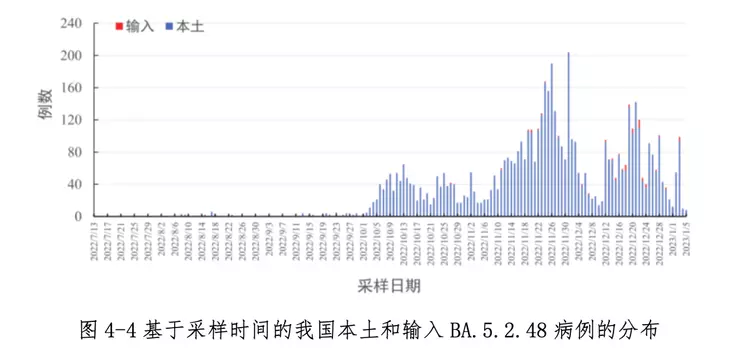


Average Rating